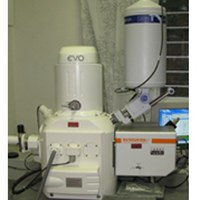Consulting and services

CHIMIND Department, thanks to the contribution of Toso Montanari Foundation, has acquired a series of particularly important scientific equipment in recent years.
Electron microscope with RAMAN probe
The equipment owned is available to all the teaching and research staff of "Toso Montanari" Department of Industrial Chemistry and Department of Industrial Engineering, defined as internal users. Some instruments are freely accessible, others with the help of the technical reference personnel of the equipment.
The cost linked to the use of the various equipment is, for internal users, purely symbolic and shown in the tariff.
Other university structures of the University of Bologna can use the same equipment at a higher cost.
CHIMIND Department also provides an analysis service on behalf of third parties carried out by specialized technical personnel with costs defined by a specific tariff
The purchase of equipment and its use is governed by specific general regulations.
All tools must be reserved for their use using the corresponding web pages or by contacting the responsible users directly.
For further information, contact the reference personnel of the individual devices or Dr. Stefano Cerini.
Equipment and/or types of analysis
Scanning Electron Microscope (SEM) with Raman probe and EDS
By means of the SEM microscopy system it is possible to analyze samples and at the same time determine the elemental composition using the EDS probe or the chemical constitution using the RAMAN probe.
Reference: Dr. Fabrizio Tarterini
The focal scanning microscope uses a multifocal scanning procedure through motorized movement of the focus (Z) axis (automulti-focus).
Reference: Dr. Fabrizio Tarterini
Raman spectrometer Renishaw Invia interfaced with Leica DMLM optical microscope (obj. 5x, 20x, 50x). Exciter sources: Ar+ laser (514.5nm), diode laser (785.0nm). The system is equipped with filters to eliminate exciter monochromatic radiation (edge filters), monochromators (1800 lines/mm, 1200 lines/mm), CCD detector. The components and optical paths are optimized for the different exciter sources. The instrument can be coupled to the SEM via a Renishaw SCA Raman probe.
Reference: Dr. Francesca Ospitali
Agilent 4210 MP-AES Atomic Emission Spectrometer
It allows the qualitative and quantitative determination of 71 elements, with the possibility of carrying out rapid multi-element screening, with a reduced sample consumption (0.5 ml for each analyzed line) and with sensitivities close to those of the graphite furnace. Samples must be in solution.
Reference: Dr. Alberto Mucchi
Bruker Alpha FT-IR spectrometer.
• Analysis of powders or liquids in Transmission mode in the mid-IR (spectral range 4000-400 cm-1)
• Analysis of solids, powders, liquids in ATR (Attenuated Total Reflectance) mode with two Internal Reflection Elements (IRE): crystal diamond and germanium crystal
• Possibility of analysis in Reflectance mode, without the need for sampling.
Reference: Dr. Francesca Ospitali
Magnetic Resonance Spectrometers (NMR)
The NMR technique allows the determination of the structure of molecules in solution using the effects of magnetic fields on atomic nuclei.
Supervisor: Prof. Andrea Mazzanti
The XRF instrumentation allows the elemental analysis of the elements included between F (fluorine) – U (uranium) in a wide range of concentrations, from ppm to tens of percentage units.
Reference: Mr. Salvatore Spatola
The mass spectrometer allows you to measure both conventional and exact mass of solid, liquid and gaseous substances.
Reference: Mr. Luca Zuppiroli
Circular Vibrational Dichroism (VCD)
With this type of technique it is possible to determine the enantiomeric excess and the absolute configuration of organic molecules if the spectrum of the corresponding enantiopure substance is known.
Supervisor: Prof. Andrea Mazzanti
Dynamic Light Scattering (DLS)
DLS is a non-invasive technique, now established, also called PCS (Photon Correlation Spectroscopy ) or QELS (Quasi-Elastic Light Scattering) for measuring the size of typically sub-micron molecules, nanoparticles or colloids.
Reference: Dr. Stefano Cerini
The spectrofluorimeter is an equipment capable of recording emission spectra on liquid and solid samples (powders, films, etc.) and on solutions frozen at 77K.
Supervisor: Prof. Stefano Stagni
Digital optical fiber spectrophotometer
The digital optical fiber spectrophotometer allows you to perform reflection, transmission and absorption measurements in the UV-Vis region.
Reference: Dr. Stefano Cerini
The Aerosol spectrometer allows real-time analysis of the particulate defined as PM10, PM2.5 and PM1.
Reference: Dr. Stefano Cerini
Atomic Absorption Spectrometer
Atomic Absorption Spectroscopy (AAS) is an analysis technique that can be used for the determination of over 60 elements, those which have, at least in part, a "metallic" character, i.e. all with the exception of hydrogen, carbon, nitrogen, oxygen, sulphur, halogens, noble gases and some others.
Reference: Dr. Alberto Mucchi
Gas Chromatography Coupled Mass Spectrometry (GC-MS)
The gas-mass analytical methodology (GC/MS) combines the gas-chromatographic technique (GC) with the potential of mass spectrometry (MS) for the qualitative and quantitative determination of a wide range of substances, mainly organic, with low polarity and low molecular weight united by a boiling temperature always lower than 300°C.
Reference: Dr. Stefano Cerini
By means of the gas chromatographic technique it is possible to separate a mixture of volatile compounds and determine its composition.
Reference: Dr. Stefano Cerini
High Pressure Liquid Chromatography (HPLC )
By means of HPLC it is possible to separate a mixture of soluble products and to determine their composition.
Reference: Dr. Stefano Cerini
By using microwaves it is possible to carry out chemical reactions in less time, minimizing energy costs and the use of solvents
Reference: Dr. Stefano Cerini
Four-point conductivity measurement system
The 4PP system allows the measurement of the electrical resistivity of semiconductor materials, both in bulk and in thin film.
Reference: Dr. Stefano Cerini
Rotational viscometer
The instrument allows investigation in the field of rheology, the discipline that studies the deformations that bodies undergo when subjected to stresses, relating internal stresses to structural deformations.
Supervisor: Prof. Alberto Arcioni
Computerized version universal machine, single test compartment series, developed to carry out tensile, compression, bending, bending, etc. tests. for materials with medium-low mechanical resistance.
Dr Fabrizio Tarterini